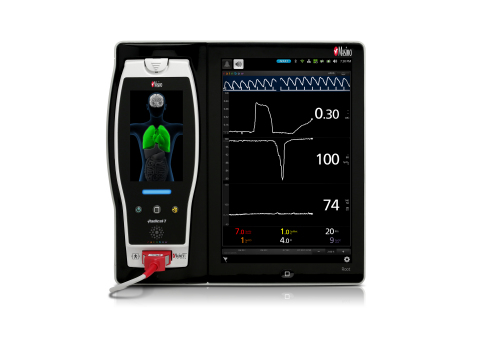
Photo credit: Business Wire
Masimo, on 27 August 2019, announced the latest publication of a report on 150 randomized controlled trials of ICU patients in Intensive Care Medicine. Researchers evaluated with pure oxygen saturation (Sp02 comparison) monitoring, Masimo ORi ™ (oxygen reserve index) monitoring critically ill patients in the possibility of shortening the time of high oxygen. ORi is an index of the degree of oxygenation in the moderate hyperoxia section, defined as the oxygen artery partial pressure PaO 2 ranging from 100 to 200 mm Hg. ORi is a graded "index" between 0.0 and 1.0, and clinicians can use their trends to understand changes in the patient's oxygen reserve.
Dr Sigismond Lasocki, Ph.D., CHU Angers, France, and colleagues sought to assess whether the inhaled oxygen fraction (FiO 2 ) in patients with mechanical ventilation can be moderately high by monitoring ORi rather than simply SpO2. Time of oxygen state (PaO 2 ≥ 100 mm Hg). 150 adult patients with critical illness had received mechanical ventilation for at least 2 days and were randomized to ORi and control groups. Root using Masimo ® care patients and interworking with internet Rainbow ® sensors and measuring ORi Sp02. In the ORi group, the nurses lowered FiO 2 when ORi ≥ 0.01. In the control group (only SpO 2 was monitored ), nurses lowered FiO 2 when SpO 2 ≥ a certain upper limit of prescription. PaO 2 was measured by analyzing arterial blood gas.
The analysis data were from 75 patients in the ORi group and 71 patients in the control group. In the statistical sense, the researchers found that monitoring ORi significantly reduced the percentage of days in which patients were exposed to high oxygen without significantly increasing hypoxia: hyperoxia, 14% (0 to 33%) vs. control group in the ORi group. 33% (11 to 56%) (p=0.003). The percentage of hours of hyperoxia in the ORi group was also “lower”: PaO 2 ≥ 100 mm Hg, 7.4% (0–24.8%) in the ORi group and 17.3% in the control group (3.8–43.1%) (p=0.0069), PaO 2 ≥ 120 mm Hg, 0% (0–7.2%) in the ORi group and 5.6% (0–18.1%) in the control group (p=0.0037).
The researchers concluded that " using ORI monitoring to titrate oxygen supply rates can shorten the patient's high oxygen rate compared to SpO 2 alone, probably because nurses are reluctant to lower the oxygen supply rate when SpO 2 is in the normal range. The department has implemented a nurse-driven procedure that regulates FiO 2 by SpO2, which explains why the percentage of hyperoxia time observed in the control group is much lower than the usual report (30 vs 60%). In the department that regulates the oxygen supply rate protocol, this strategy of lowering the oxygen supply rate by ORi (higher PaO 2 can be detected ) may be more efficient. SpO2 can still be used as a warning of hypoxia, and ORi can be used as a high Oxygen warning. A larger sample size study is needed to assess the clinical benefit of the strategy."
Ori has not been approved by the FDA 510(k) and is not available for sale in the United States.




